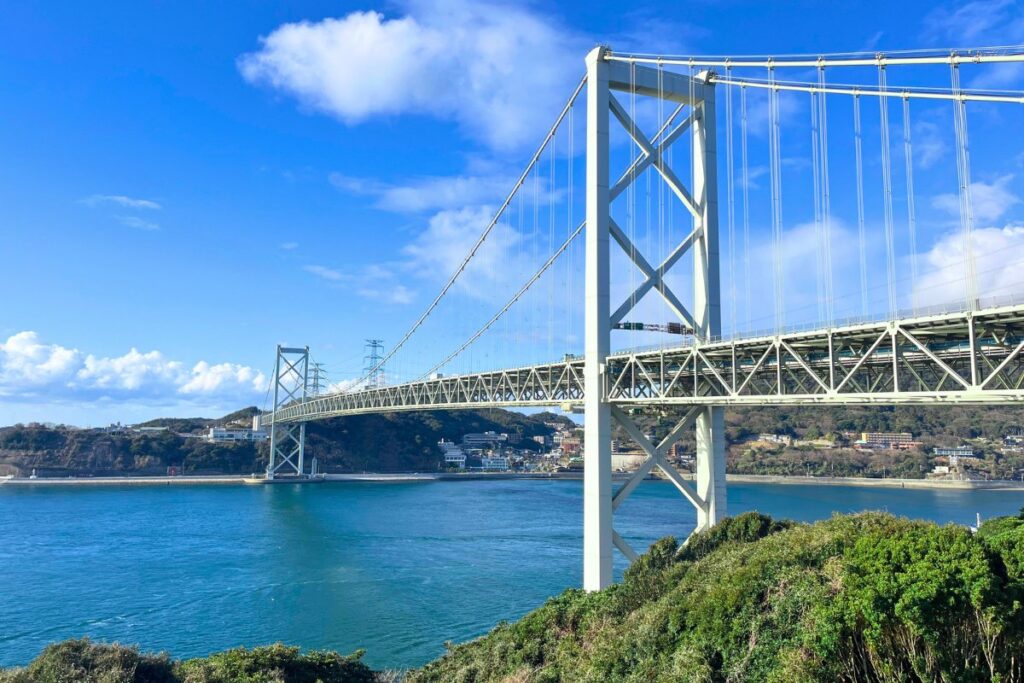
Looking to explore beyond Fukuoka City? Don’t worry! I’ve got you covered with this ultimate list of the best day trips from Fukuoka, Japan!
Renowned for its rich history, vibrant nightlife, and stunning natural scenery, Fukuoka is an incredible destination in its own right.
However, if you’re here for a longer stay, you may find yourself seeking adventure beyond the city limits.
And thankfully for you, Fukuoka is surrounded by a variety of incredible destinations and hidden gems.
From historically rich towns to stunning seaside escapes, small charming cities, and unique cultural landmarks – there’s just so much to do and see here!
In fact, I’ve been to Fukuoka several times now (and have plans to return again) simply because the area offers so much to explore.
That being said, let’s dive right in and uncover the best day trips from Fukuoka, Japan!
*Please note: This post contains affiliate links to trusted partners. If you make a purchase using these links, I will earn a commission at no extra cost to you. Thank you for your support!
How to Get Around Fukuoka & Beyond
Traveling around Fukuoka is very easy, as public transportation in and near the city is readily available.
Within the city center, you’ll find a mix of buses and subways. Meanwhile, the train provides convenient access to many of the surrounding areas.
In addition to this, there are a number of tour operators that offer various day trips from Fukuoka.
So, whether you’d prefer to do it on your own or as part of a guided experience, you should have no problem getting around.
Pro Tip: One of the best apps for Japan (and my personal go-to) is Google Maps. So, be sure to download it and have it ready to go! It’s great for navigating public transportation as it syncs with the local transit system and provides up-to-date information and directions.
Map of Day Trips From Fukuoka, Japan
To help you plan out your Fukuoka day trips, here’s a map overview of all the destinations mentioned in this guide.
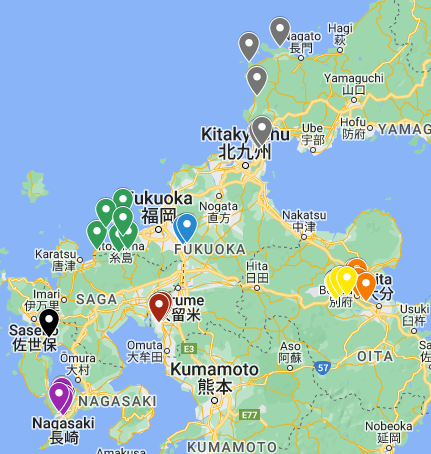
If you’d like to view an interactive version of this map, click here!
8 Best Day Trips From Fukuoka
Without further ado, let’s get right to it and discuss the best day trips from Fukuoka! All the destinations mentioned in this guide are less than 3 hours away, so you’ll have plenty of time to explore them!
Dazaifu
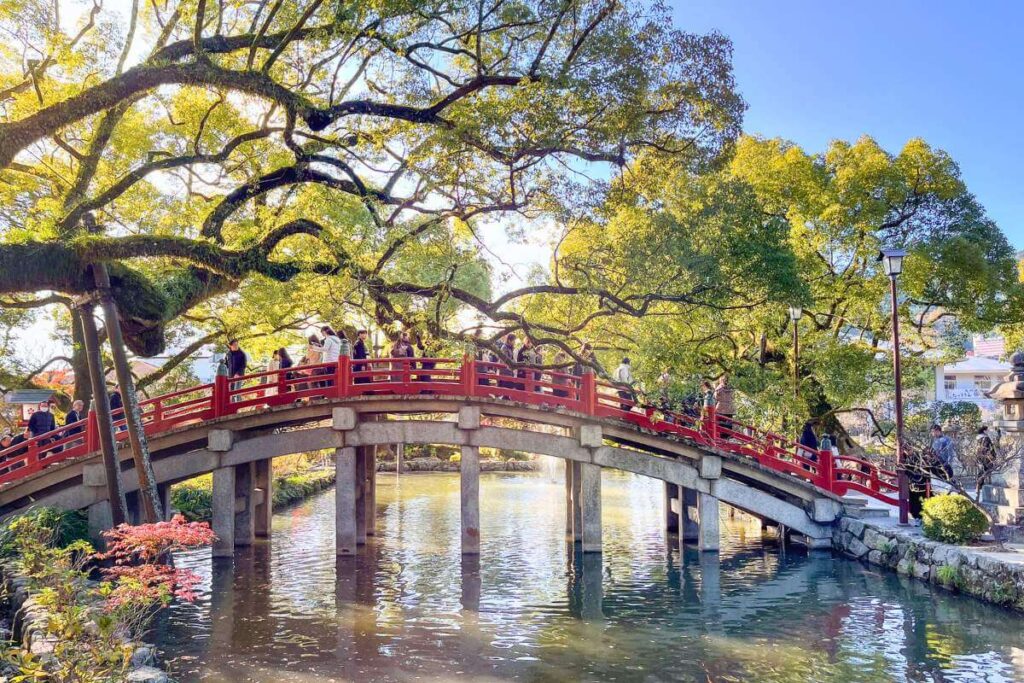
Distance: 18 Kilometers
Location: Fukuoka Prefecture, Kyushu
Situated just outside of Fukuoka, Dazaifu is a small, traditional Japanese city known for its quaint atmosphere, historical sites, and rich history.
Founded in the 7th century, the city was once known as Japan’s “Western Capital” and played an important administrative role within Kyushu for over 500 years.
While it no longer holds the political importance it once did, Dazaifu is still one of the best day trips from Fukuoka.
And given its close proximity to the city, it’s a great option for those who may be short on time.
How to Get to Dazaifu
You have a few options to consider when transiting between Dazaifu and Fukuoka, depending on your starting point.
If you’re traveling from Hakata Station, you can take a direct bus from the Hakata Bus Terminal to the Dazaifu Bus Terminal.
Meanwhile, for those coming from Tenjin, there’s a train that you can take from Nishitetsu Fukuoka Station to Nishitetsu Futsukaichi Station. Once here, you’ll need to transfer to the local line bound for Dazaifu Station.
While the bus ride takes about 40 minutes, the train ride is approximately 30 minutes, depending on transfer times.
🚌 Looking for a more guided experience? Check out these bus tours from Klook!
Best Things to Do in Dazaifu
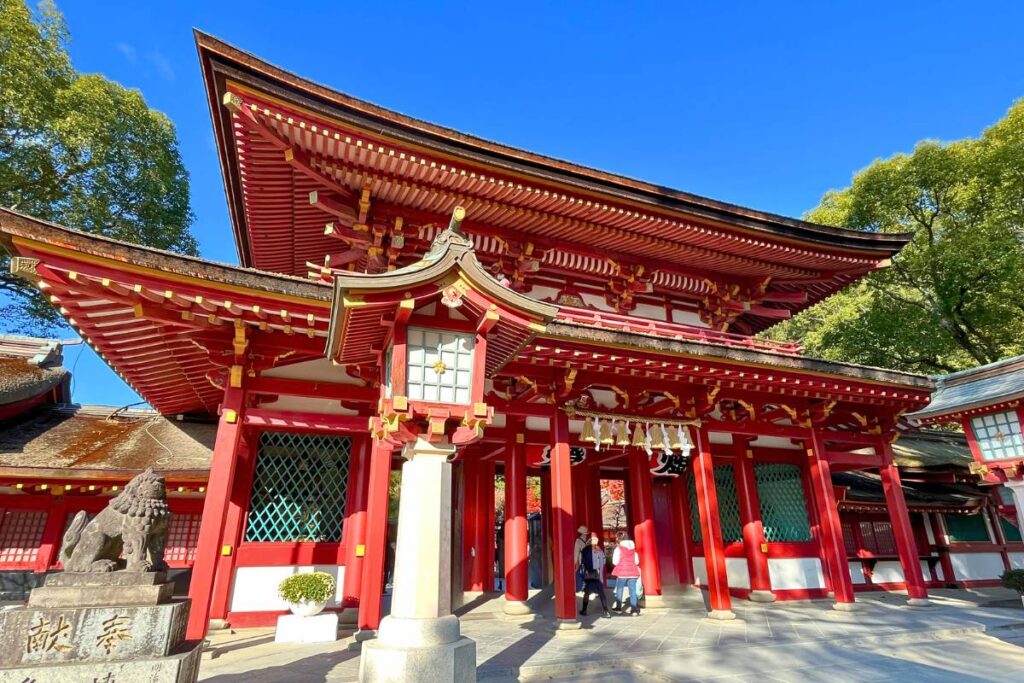
Dazaifu Tenmangu Shrine.
Here are some of the most popular things to do in Dazaifu:
- Visit Dazaifu Tenmangu Shrine: Dedicated to the deity of learning, culture, and the arts, Dazaifu Tenmangu is one of Japan’s most important Shinto shrines. Spanning 250 meters, this religious complex is home to several structures, including numerous torii gates, several worship halls, a variety of statues, and a reflective pond.
- Explore Dazaifu Tenmangu Museum: Located within the Tenmangu Shrine complex, the Tenmangu Museum features approximately 50,000 artifacts related to the shrine’s history. Here, you’ll find everything from samurai armor to ancient swords, historical poems, and other religious texts.
- Step Back in Time at the Kyushu National Museum: Opened in 2005, Kyushu National Museum is Japan’s newest national museum and the fourth one to ever exist. With a focus on local history, the museum offers several exhibits related to the historical events of Kyushu and Dazaifu.
- Shop Along Tenjinsama-dori: As the main pedestrian street of Dazaifu, Tenjinsama-dori is home to a number of local shops and restaurants. It’s the perfect place to grab some souvenirs and sample the local cuisine.
- Discover Kamado Shrine: Celebrated as a shrine of love, Kamado actually consists of two separate Shinto shrines. One is located at the base of Mount Homan, while the other is at the top of the mountain. Given its scenic location, the shrine is known for its incredible views.
Itoshima
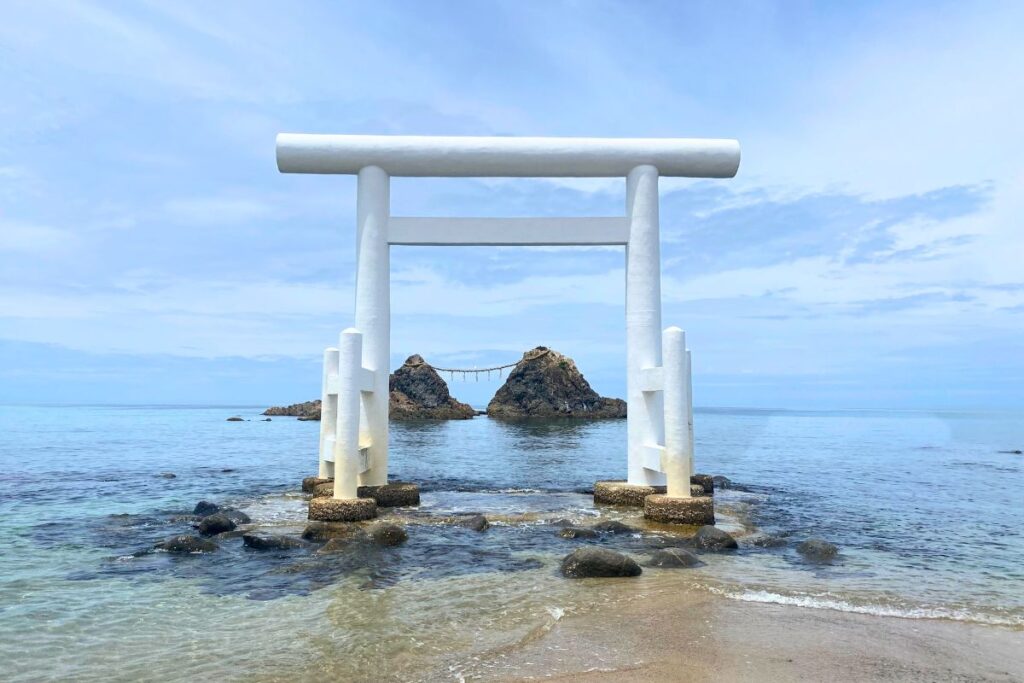
Distance: 26 Kilometers
Location: Fukuoka Prefecture, Kyushu
A hidden beach paradise, Itoshima is an incredible destination located just south of Fukuoka City.
Known for its white sandy beaches, crystal clear waters, lush forests, and cascading waterfalls, this small city is especially popular in the summer months.
Here, you can partake in several outdoor activities including swimming, hiking, boating, surfing, and biking.
What’s more, it offers some pretty incredible local cuisine – with an emphasis on seafood.
How to Get to Itoshima
While the city is reachable by train, getting around locally without your own transportation can be tricky here. As such, if you can, I highly recommend renting a car or joining a guided bus tour.
Although there aren’t many tours available, this one does seem to be pretty popular.
For those who prefer public transportation, you can utilize the Airport Subway Line. This train connects Hakata and Tenjin Stations to Chikuzen-Maebaru Station in Itoshima.
Once you arrive, I recommend heading over to the Itoshima Tourism Information Center to rent a bike. While you won’t be able to see everything this way, biking is the most convenient option for those who don’t have a car.
Alternatively, you can also try and make use of the local bus in Itoshima – just keep in mind that destinations and departure times can be very limited.
Best Things to Do in Itoshima
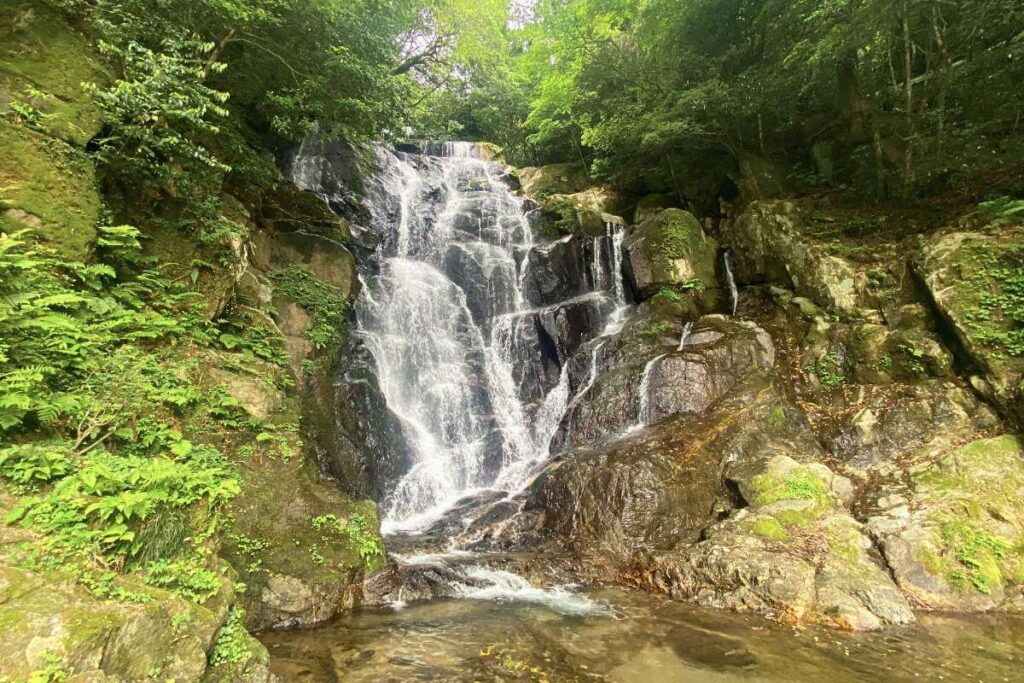
Shiraito Waterfall in Itoshima.
Here are some of the most noteable things to do in Itoshima:
- Admire Sakurai Futamigaura Bay: Famed for its beauty and religious significance, Sakurai Futamigaura Bay is one of Itoshima’s most famous destinations. Here, you’ll find a white torii gate set along a stunning beach and framed around two rocks connected by rope. Known as Meoto Iwa, these “wedded rocks” are said to symbolize and celebrate the union of marriage.
- Discover Anego no Hama Beach: Known locally as a “singing sand” beach, Anego no Hama is so clean that it literally makes noises (squeaking sounds of sorts) when people walk on it. This phenomenon is incredibly rare in Japan and can only be found among 20 of its beaches.
- Explore Keya no Ohto: Created through sea erosion, Keya no Ohto is a large basalt rock formation that features a massive cave below and an incredible lookout point above. Ferry rides are offered out to the cave between mid-March and November. Meanwhile, hiking is available year-round.
- Appreciate Shiraito Waterfall: Nestled among the forest of Haganeyama Mountain, Shiraito is a 24-meter white cascading waterfall famous for its beauty and scenic views. The area is also home to a tea house and restaurant, known for its flowing noodles.
- Visit Raizan Sennyoji Daihioin Temple: Located along the north face of Mount Raizan, Raizan Sennyoji Daihioin is a Buddhist temple that dates back to 178. Famous for its natural beauty, the temple complex explodes with color during the fall and spring seasons.
Yanagawa
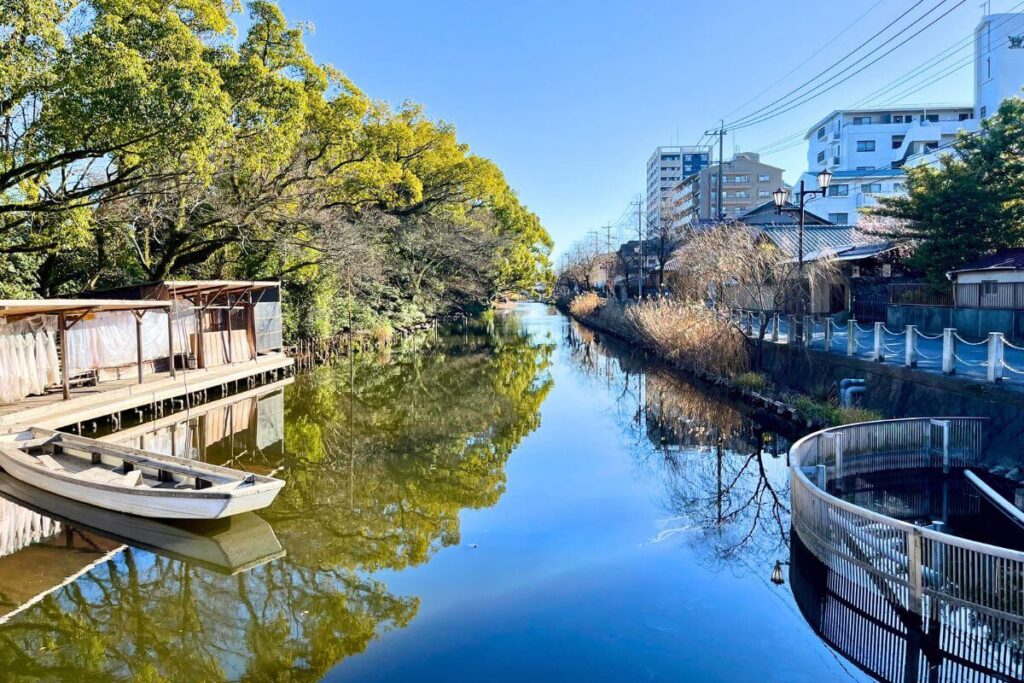
Distance: 70 Kilometers
Location: Fukuoka Prefecture, Kyushu
Dubbed the “Venice of Kyushu,” Yanagawa is a small city known for its picturesque canals and historic charm.
Founded more than 700 years ago, this city originally functioned as a castle town protected by an extensive canal system.
Today, those same canals are Yanagawa’s main attraction, drawing in visitors from across Japan – many of whom come to experience the city’s traditional boat rides.
On top of this, Yanagawa is home to a number of historical sites. And it’s especially popular for its local cuisine, which features unagi or freshwater eels.
How to Get to Yanagawa
The fastest and easiest way to travel from Fukuoka to Yanagawa is by train.
There’s a limited express train that you can take from Nishitetsu Fukuoka (Tenjin) Station to Nishitetsu-Yanagawa Station.
The transit time for this is about 50 minutes and requires no transfers.
🚌 Prefer to join a guided tour? Check out these tours from Klook and Get Your Guide!
Best Things to Do in Yanagawa
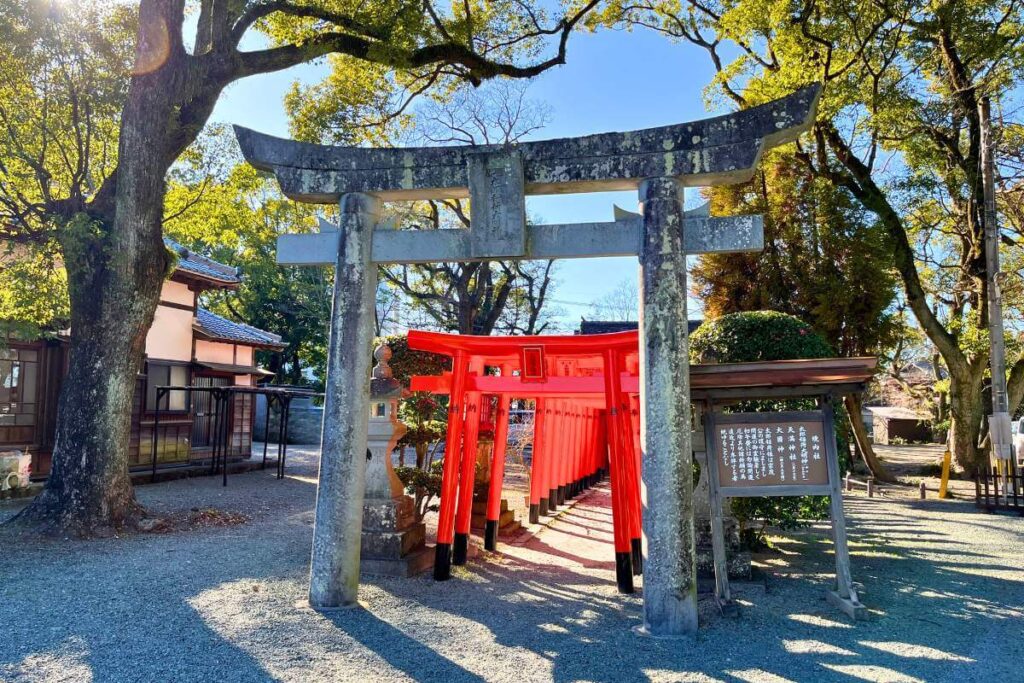
The torii gates at Mihashira Shrine in Yanagawa.
Here are some of the best things to do in Yanagawa:
- Go For a Canal Cruise: Spanning 930 kilometers, the canals of Yanagawa weave across the city offering a unique vantage point of this historic destination. While each cruise is a bit different, most are led by locals dressed in traditional attire, who ferry participants along on Donko-bune or flatboats.
- Explore Tachibana-tei Ohana: Once the residence of a feudal lord, Ohana is now a designated National Site of Scenic Beauty. Here, you’ll find an expansive estate that features a restaurant, a ryokan, a traditional Japanese garden, as well as a mix of Japanese and Western-influenced structures.
- Tour Tachibana Museum: Attached to the Ohana Estate, the Tachibana Museum is a small establishment dedicated to the history of the Tachibana clan. Most of the exhibits, which can be traced back to the Edo period, feature a mix of paintings, samurai armor, royal kimonos, and traditional trinkets.
- Visit Mihashira Shrine: Dating back to the 1800s, Mihashira is a Shinto Shrine dedicated to Yanagawa’s former lords. Within this religious complex, you’ll find a variety of stunning structures, including a main hall, red torii gates, and a permanent display of traditional Japanese lanterns.
- Discover the Former Residence of the Toshima Family: A National Scenic Site, the Old Toshima Villa was once home to retired samurais. Since then, it’s been preserved and now offers a glimpse into the lives of those who lived during the Edo period.
🌟 For more information on Yanagawa, be sure to check out my detailed guide on things to do in Yanagawa.
Nagasaki
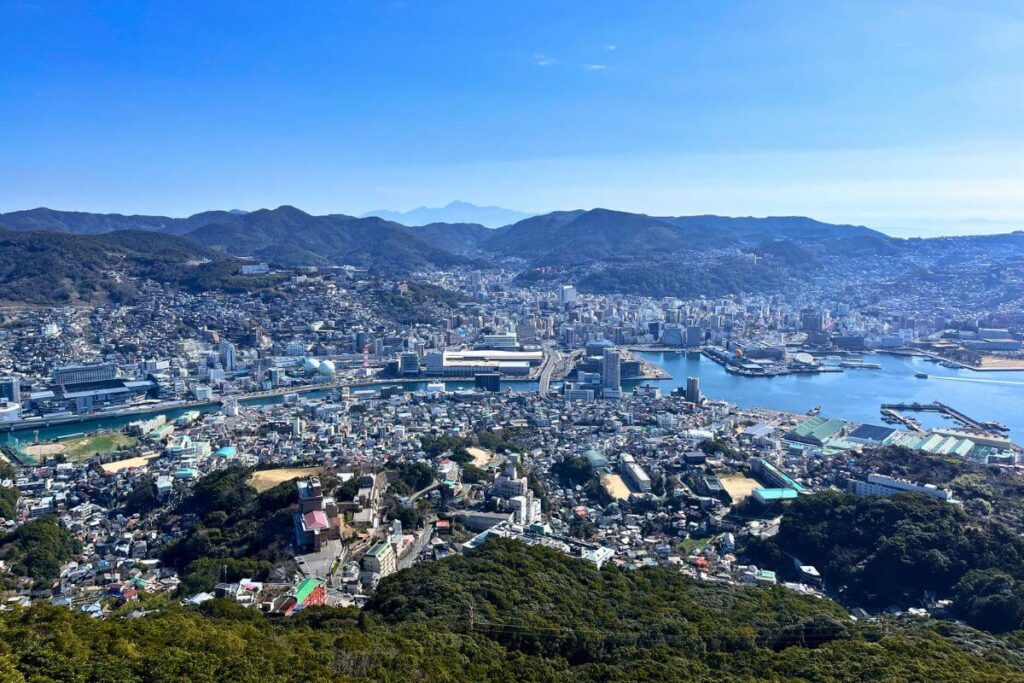
Distance: 153 Kilometers
Location: Nagasaki Prefecture, Kyushu
Most widely known for its tragic past, Nagasaki is a vibrant and remarkable destination – one that offers a mix of culture, history, and natural scenery.
Here, you’ll find everything from ancient temples to sobering museums, lively traditional festivals, and stunning coastal views.
What’s more, the city is home to a large international community, which means the food here is absolutely incredible.
Add on the fact that the city is located just south of Fukuoka, and you’ve got yourself the perfect day trip destination!
How to Get to Nagasaki
When planning a day trip from Fukuoka to Nagasaki, your best option is to travel via train.
There’s a limited express train that you can take from Hakata Station to Takeo-Onsen Station. Once here, you’ll need to transfer over to the Nishi Kyushu Shinkansen bound for Nagasaki Station.
The trip takes about an hour and a half to two hours, depending upon your transfer times.
Best Things to Do in Nagasaki
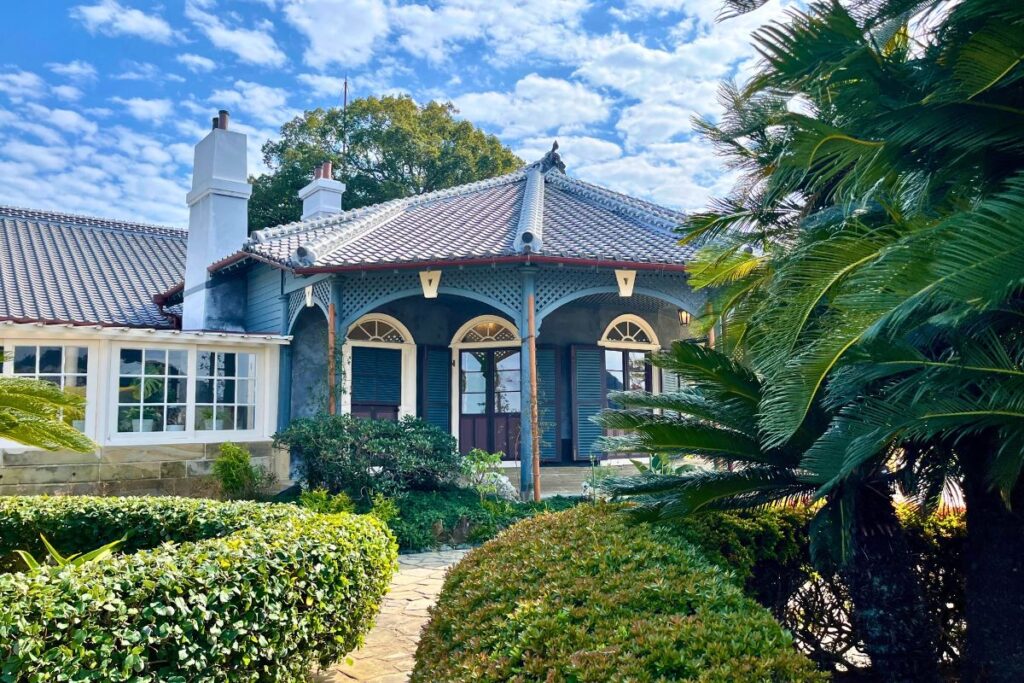
Glover Garden in Minami Yamate Hillside.
Here are some of the most popular things to do in Nagasaki:
- Visit the Nagasaki Atomic Bomb Museum: Built in remembrance of the WWII bombing of Nagasaki, the Atomic Bomb Museum aims to shed light on the city’s tragic past. Here, you’ll find a variety of exhibits and displays detailing the events that occurred before, during, and after the bombing. It’s a definitely sobering place to visit, but an important one nonetheless.
- Explore the Nagasaki Peace Park & Hypocenter Park: Situated across the street from the Atomic Bomb lies the Nagasaki Peace Park and Hypocenter Park. Also built in remembrance of the bombing, these parks feature a variety of monuments and statues, including the Fountain of Peace and the Peace Statue.
- Take in the Views From Mt. Inasayama Observatory: It is said that Nagasaki offers some of the best nighttime views in the world – and the best place to admire these views is from the Mt. Inasayama Observatory. Situated 333 meters above sea level, this lookout point is accessible via public bus, car, or ropeway.
- Discover Shinchi Chinatown: Nagasaki is home to Japan’s oldest Chinatown – and one of its largest. Dating back to the 17th century, this lively district spans more than 250 square meters and offers a mix of eateries, shops, and street vendors.
- Wander Along Minami Yamate Hillside: Once home to several foreign merchants and traders, Minami Yamate Hillside is known for its Western-style structures. Here, you’ll find several notable attractions, including Glover Garden and the Oura Cathedral, which has been designated a UNESCO World Heritage Site.
🌟 For a more in-depth guide to Nagasaki, be sure to check out my 1 day Nagasaki itinerary.
Huis Ten Bosch
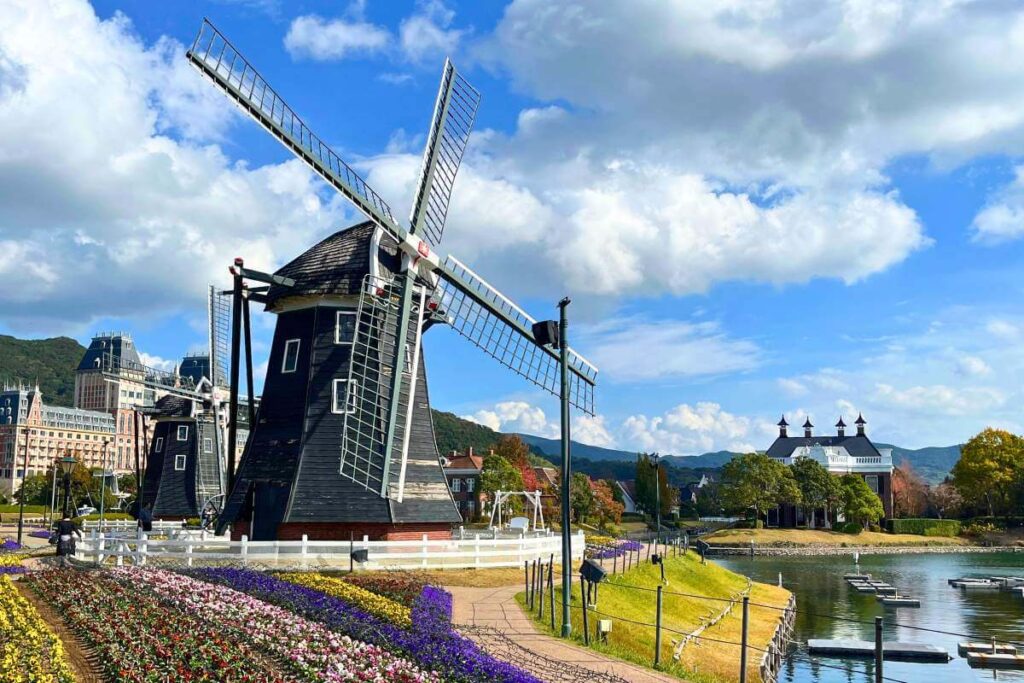
Distance: 124 Kilometers
Location: Sasebo, Nagasaki Prefecture, Kyushu
Situated just south of Fukuoka, Huis Ten Bosch is a Dutch-inspired theme park known for its European atmosphere and charm.
From cobblestone streets to wooden windmills, steepled churches, and winding canals, the park truly feels like it belongs in Europe!
What’s more, Huis Ten Bosch is home to a number of interactive attractions, including zip lines, virtual reality experiences, high-ropes courses, and an opera house.
On top of that, there are several seasonal events and performances that take place throughout the year.
How to Get to Huis Ten Bosch
The best way to travel from Fukuoka to Huis Ten Bosch is via the Huis Ten Bosch Limited Express Train.
This train, which departs from Hakata Station, offers direct service to Huis Ten Bosch Station.
The journey for this takes about an hour and 45 minutes in total.
🚌 Prefer to travel by bus? Check out these non-guided bus tours that depart from Hakata and Tenjin. Tickets include admissions into the park!
Best Things to Do in Huis Ten Bosch

Here are some of the best things to do in Huis Ten Bosch:
- Visit Palace Huis Ten Bosch: Home to the theme park’s namesake, Palace Huis Ten Bosch is a replica of the original Huis Ten Bosch Palace located in the Netherlands. Here, you’ll find several elaborate gardens as well as a museum that displays a variety of artwork from across the globe.
- Play at the Adventure Park: Adventure Park is, without a doubt, one of the most exciting zones of Huis Ten Bosch. From zip lines to high ropes courses and an interactive dinosaur forest, this is where to go for maximum fun.
- Discover Fantasia City of Lights: Known for its incredible light projections, Fantasia City of Lights is home to a variety of interactive museums. Using colorful light displays, these museums offer the opportunity to explore other worlds.
- Explore Attraction Town: Home to the park’s famous carousel, Attraction Town is where most of the virtual reality experiences are located. In addition to this, the area offers a variety of restaurants and gift shops.
- Experience Seasonal Events: Huis Ten Bosch host a number of seasonal events throughout the year. These celebrations feature a variety of elaborate displays, festive decor, lively parades, special performances, and unique activities.
🌟 Planning to visit Huis Ten Bosch for the holidays, be sure to check out my holiday guide!
Beppu
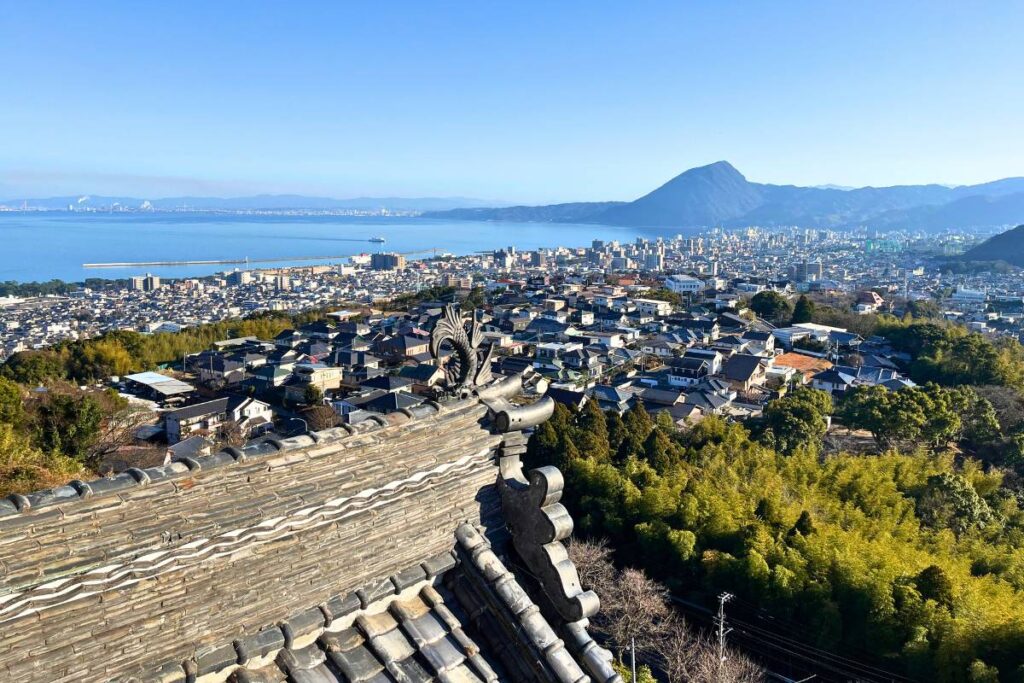
Distance: 147 Kilometers
Location: Oita Prefecture, Kyushu
Known as the Onsen Capital of Japan, Beppu is, without a doubt, one of the most popular and sought-after day trips from Fukuoka.
Here, you’ll find the country’s highest concentration of onsens (aka hot springs) – and the second-highest concentration in the entire world.
These hot springs in particular are famous for their vibrant colors and are even said to possess healing properties.
In addition to this, Beppu also offers a variety of unique attractions, including stunning coastal views, lively wildlife, serene bamboo forests, and delectable local cuisine.
How to Get to Beppu
The easiest way to travel from Fukuoka to Beppu is aboard the Sonic Limited Express train.
This train, which departs from Hakata Station, provides direct service to Beppu Station.
The travel time for this is about two hours in total.
🚌 Looking for a more guided experience? Check out these bus tours from Klook and Get Your Guide!
Best Things to Do in Beppu
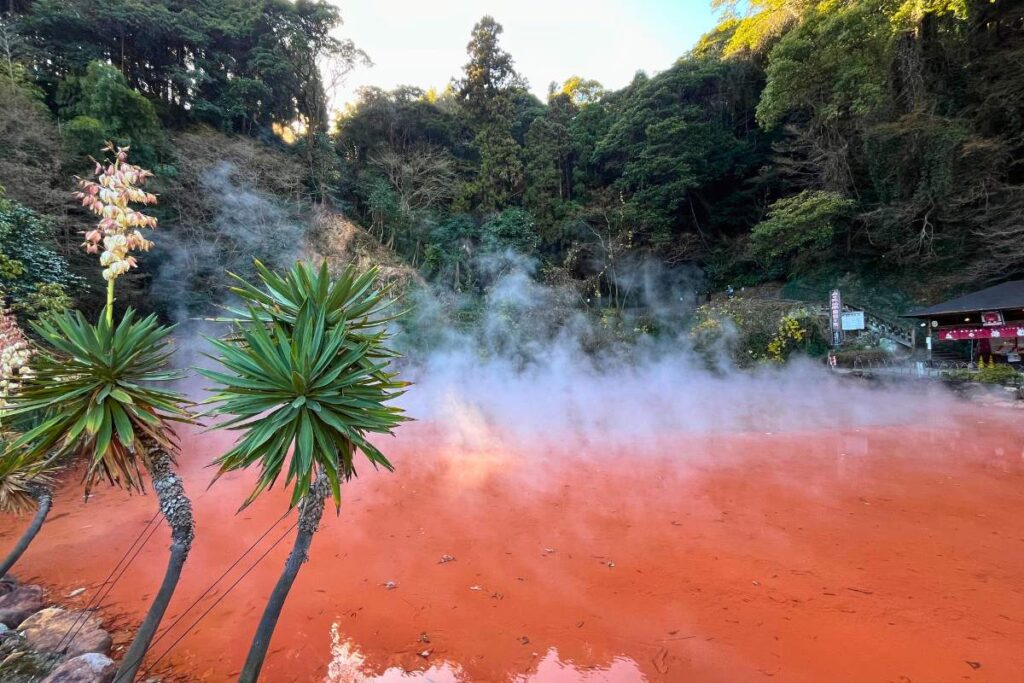
Chinoike Jigoku, one of Beppu’s hot spring hells.
Here are some of the most noteable things to do in Beppu:
- Explore the 7 Hells of Beppu: The Hells of Beppu, also known as Beppu’s Jigoku, are the star attraction in the city. Consisting of 7 brightly colored hot springs, these “hells” are not open for bathing, but rather for viewing.
- Visit Kifune Castle: Perched on an overlook above Beppu, Kifune Castle offers incredible views of the city. Here, you can also tour the castle and meet its official guardian – an albino python.
- Discover Beppu’s Parks: Beppu is home to two incredible parks – the Beppu Park and the Takasakiyama Natural Zoological Garden (aka Beppu’s Monkey Park). While the Monkey Park is known for its wild snow monkeys, Beppu Park is popular for its cherry trees and bamboo grove.
- Sample Hell-Steamed Cuisine: In the resort town of Beppu, you can sample food that’s been steamed using the city’s hot springs. Served by restaurants and street vendors alike, this unique cuisine is well worth trying!
- Relax at Hyotan Onsen: No visit to Beppu would be complete without a dip in an onsen – and Hyotan Onsen is one of the best in the city. As Japan’s only three-star Michelin onsen, it offers a variety of bathing experiences.
🌟 For a more detailed guide to Beppu, be sure to check out my 2 day Beppu itinerary.
Yufuin
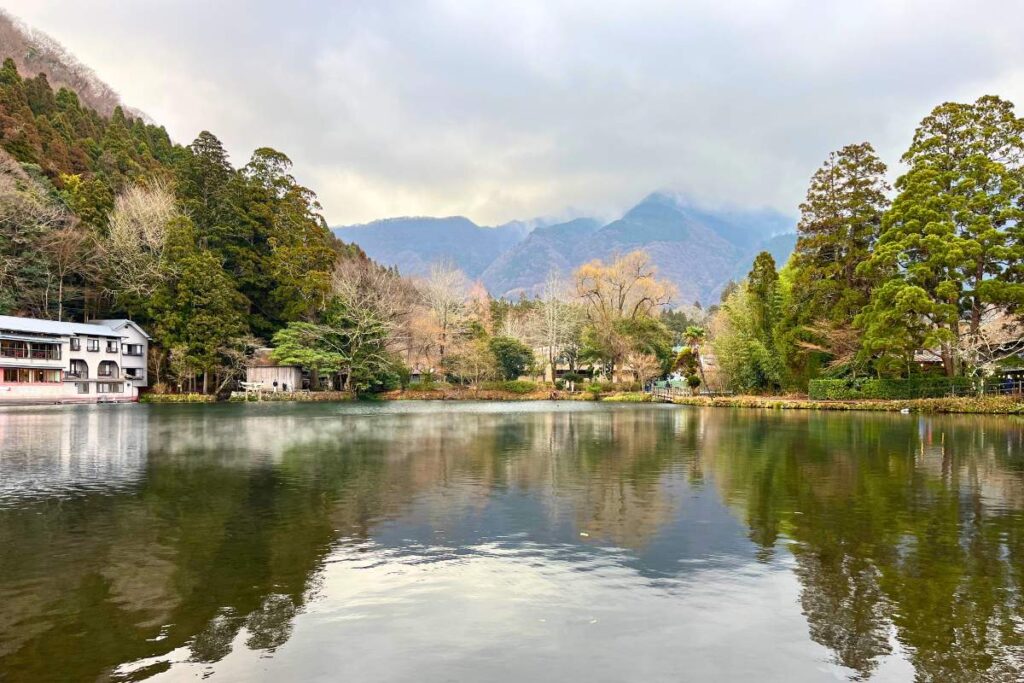
Distance: 126 Kilometers
Location: Oita Prefecture, Kyushu
Another popular onsen town, Yufuin is situated right next to Beppu and offers a smaller, slightly less crowded experience.
Here, you’ll find a number of onsen resorts, as well as hotels and house rentals that offer hot spring experiences.
In addition to this, the town is famous for its stunning natural scenery, fairytale-like attractions, and magical ambiance.
Given Yufuin’s close proximity to Beppu, it’s possible to combine the two and visit both on a day trip from Fukuoka.
How to Get to Yufuin
If you’re coming from Fukuoka, you can take either a train or a bus to Yufuin.
The fastest option is the bus, which takes about two hours. It travels from the Hakata Bus Terminal directly to the Yufuin Station Bus Center.
Meanwhile, the Yufu Limited Express Train, which offers service from Hakata Station to Yufuin Station, takes about two and a half hours.
For those traveling over from Beppu, there’s a local bus that you can take from Beppu Station to the Yufuin Station Bus Center. The journey time for this is about an hour.
🚌 Prefer to join a guided tour? Check out these options from Klook and Get Your Guide. Some of them include stops in Yufuin as well Beppu!
Best Things to Do in Yufuin
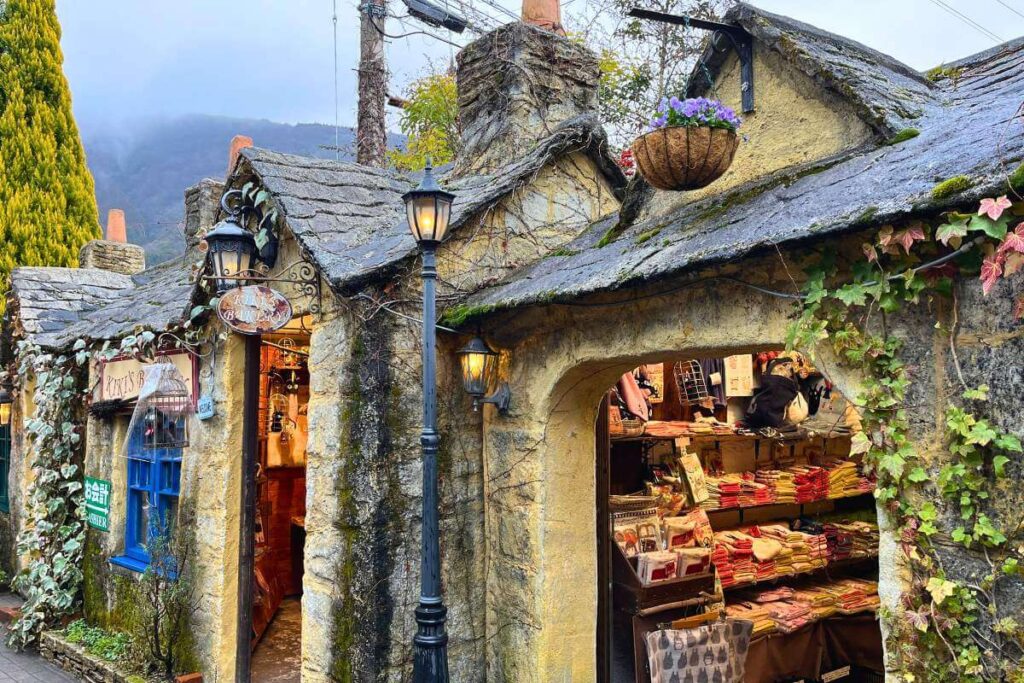
The Floral Village in Yufuin.
Here are some of the most popular things to do in Yufuin:
- Discover Yufuin Floral Village: Yufuin’s most famous attraction, the Floral Village is a mini-theme park of sorts that was inspired by Harry Potter. Featuring English-style cottages, the village is home to a number of shops and cafes.
- Admire Lake Kinrin: Surrounded by mountains, Lake Kinrin is a small but incredibly scenic lake located right in town. Known for the morning mist that rolls over it, the lake is fed by both hot springs water and freshwater runoff from the mountains.
- Shop Along Yunotsubo Street: As the main shopping street in Yufuin, Yunotsubo is the best place to go to find souvenirs. The street is filled with small local shops, as well as cafes, art galleries, restaurants, and street vendors.
- Relax At a Local Onsen: Yufuin is home to a number of onsen facilities that are open to the public. While a bit smaller than those you’ll find in Beppu, they are still worth checking out!
- Hike Through Aso-Kuju National Park: Situated just outside of Yufuin lies Mount Yufu and Mount Tsurumi, both of which are part of the Aso-Kuju National Park. There are several hiking trails here that you can utilize to explore the area and its incredible landscapes.
Southeastern Coast of Yamaguchi
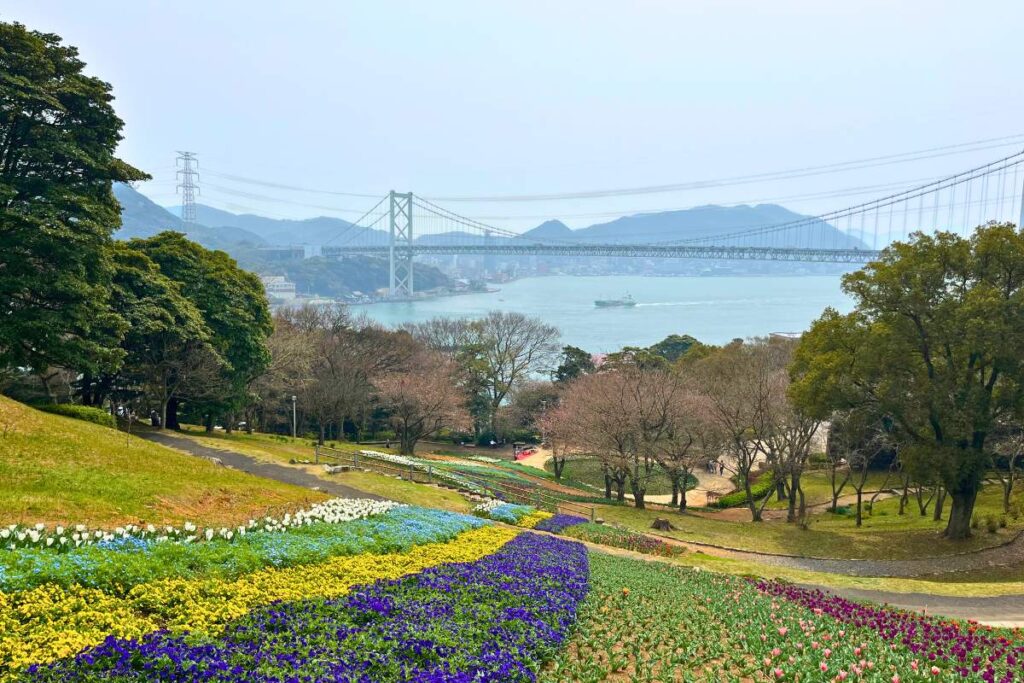
Distance: 94 – 162 Kilometers
Location: Yamaguchi Prefecture, Honshu
While many visitors overlook Yamaguchi Prefecture, I think it’s a great option to consider when planning day trips from Fukuoka.
In particular, the southeast coast is full of natural attractions and hidden gems that aren’t too far away.
From the fish markets of Shimonoseki to the torii gates of Nagato and the stunning coastal views around Tsunoshima Island – there’s certainly plenty to do and see here!
And the best part is the area isn’t nearly as crowded as some of the other destinations on this list.
How to Get to Yamaguchi
To explore this area of Japan, your best bet is to rent a car or join a guided tour.
While you can easily and quickly reach Shimonoseki via train, it’s difficult to explore beyond that without your own means of transportation.
Ideally, if you can, I would recommend renting a car in Fukuoka and driving up. However, if that isn’t possible, there are several bus tours that you can join instead.
Best Things to Do in Yamaguchi
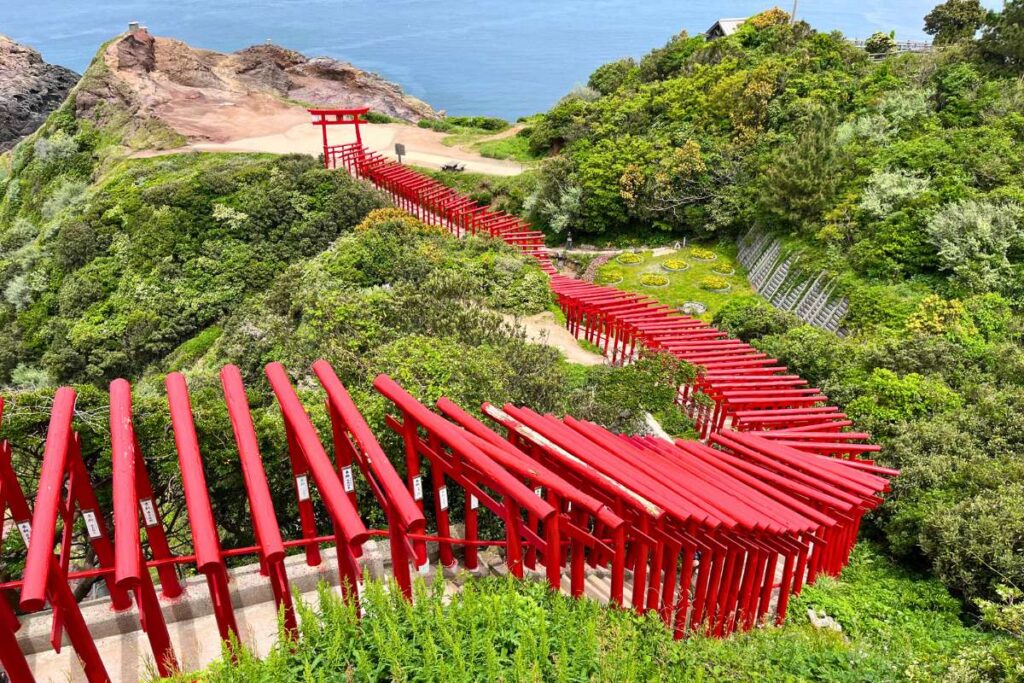
Motonosumi Inari Shrine in Nagato, Yamaguchi.
Here are some of the most noteable things to do in Yamaguchi:
- Visit Motonosumi Inari Shrine: Situated in the coastal city of Nagato, Motonosumi Inari Shrine is a picturesque Shinto shrine that offers incredible ocean views. The shrine’s most notable feature is the 123 red torii gates that lead out to a rocky outcrop overlooking the sea.
- Admire Tsunoshima Bridge: Connecting Tsunoshima Island to mainland Japan, the Tsunoshima Bridge spans 5,840 feet, traveling over some of the prettiest waters in the country. The view here is absolutely stunning, especially on a sunny day – and is certainly worth checking, if you happen to be in the area.
- Sample Local Seafood at Karato Fish Market: Yamaguchi’s most famous fish market, Karato offers a wide array of fresh, locally caught fish and seafood. Located in Shimonoseki City, the market is most widely known for its pufferfish or fugu dishes (which, as a side note, can actually be deadly, if it’s not properly prepared).
- Take in the Views From Hinoyama Park: Located on Mt. Hinoyama in Shimonoseki, Hinoyama Park offers incredible views of the coast and the Kanmon Straits. Accessible via car or ropeway, the park is especially popular during the spring when the cherry blossoms bloom.
- Discover Fukutoku Inari Shrine: Nestled along the coast between Shimonoseki and Tsunoshima, Fukutoku Inari Shrine is a Shinto Shrine that is home to an impressive array of red torii gates. Hidden a bit off the beaten path, this scenic shrine offers great views of the ocean.
Final Thoughts: Best Day Trips From Fukuoka
So, there you have it – my top picks for the best day trips from Fukuoka. Hopefully, this guide is helpful in planning your own itinerary for Kyushu.
Regardless of where you decide to go, I’m sure you’ll have an incredible time. After all, Fukuoka and its surrounding gems offer incredible experiences that are bound to excite and inspire you!
Interested in taking a few day trips from Fukuoka? Where would you like to go? Let me know in the comments below!
Enjoy this post about Fukuoka day trips? Pin it now for later!
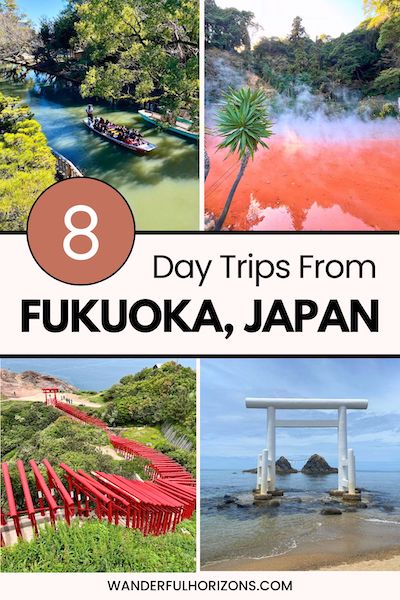
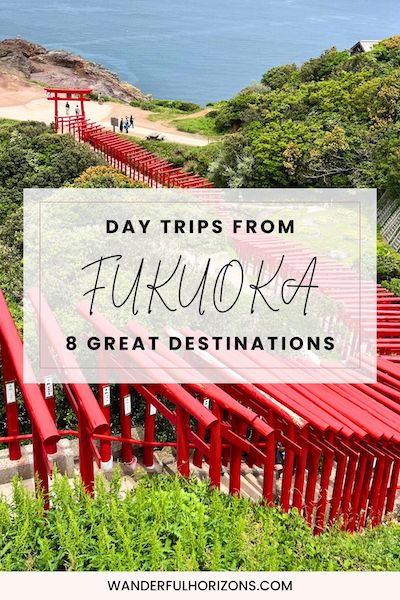
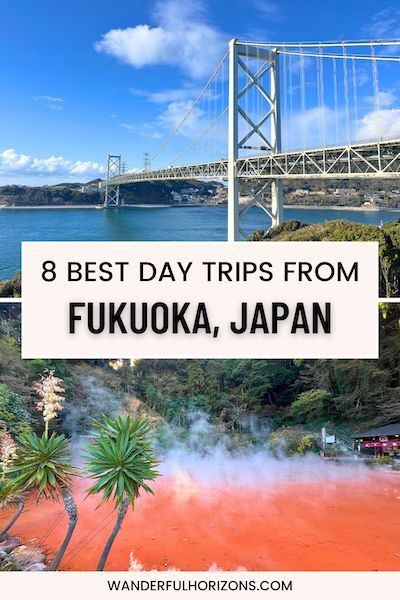

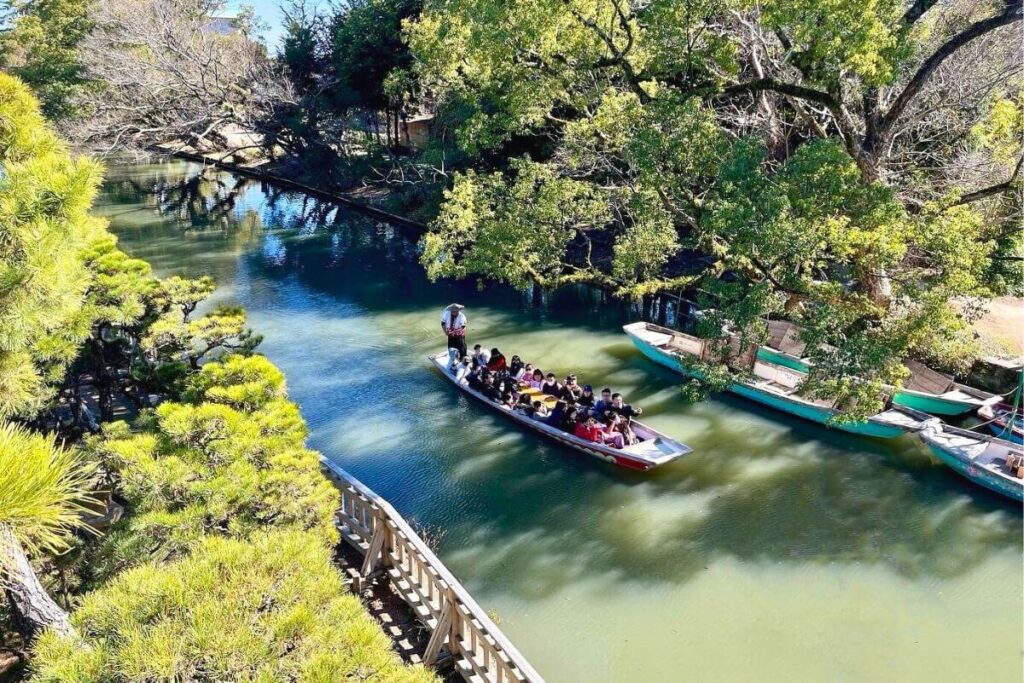
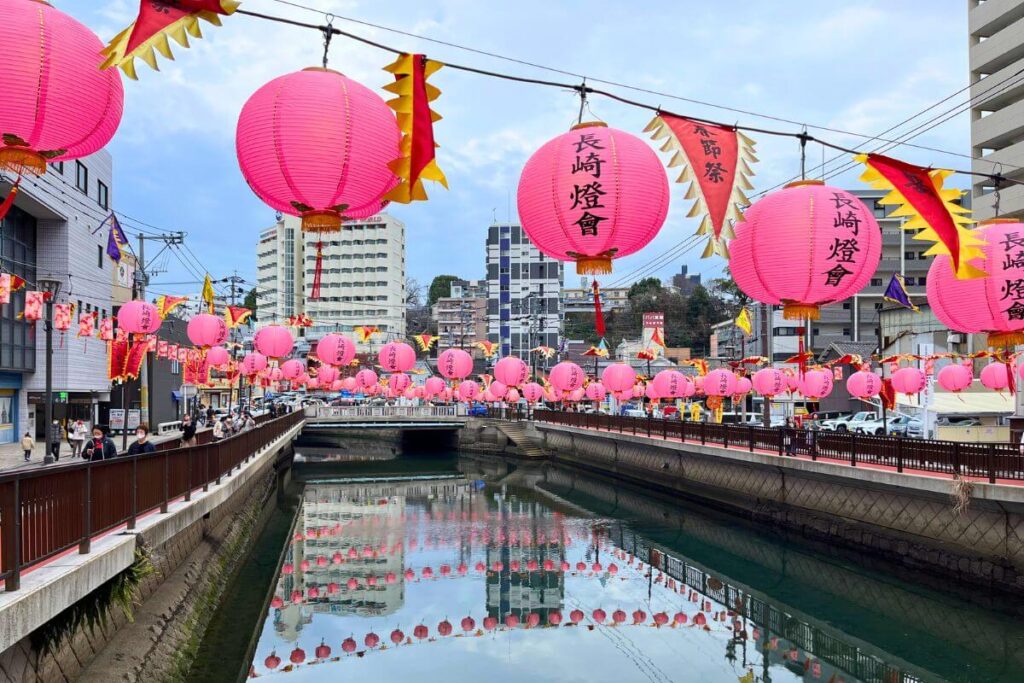
I may never make it to Fukuoka, but I absolutely love learning about new places and day trips like these! It’s fascinating to read about all the hidden gems and adventures that lie beyond the city. This guide makes me feel like I’m exploring right alongside you—thanks for sharing!
Thank you! I’m glad you enjoyed it!!